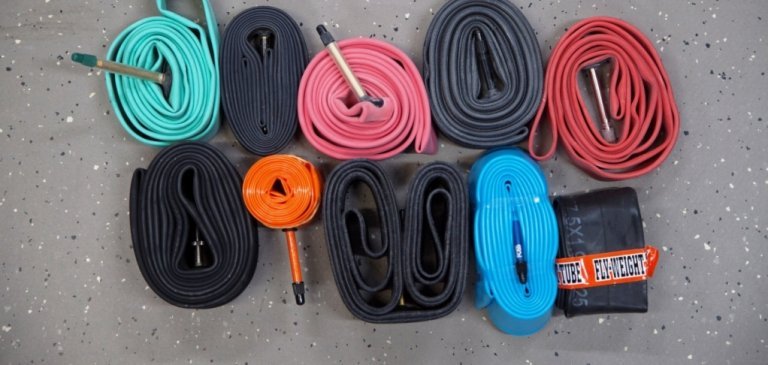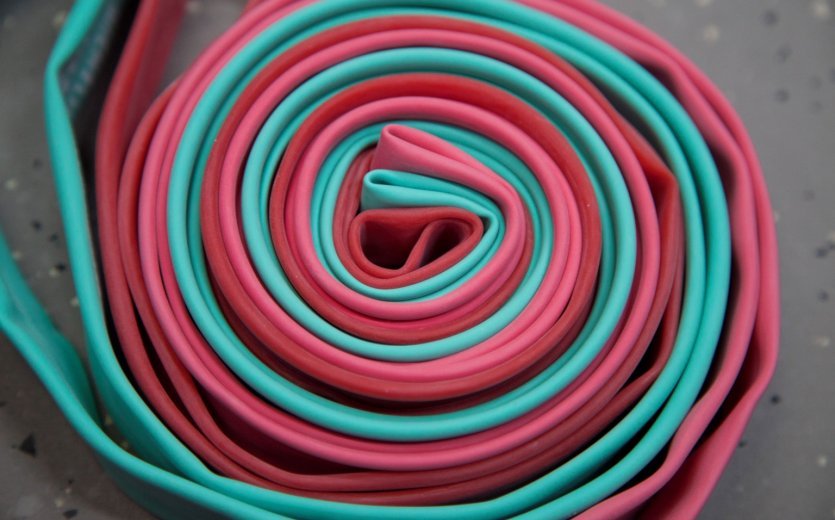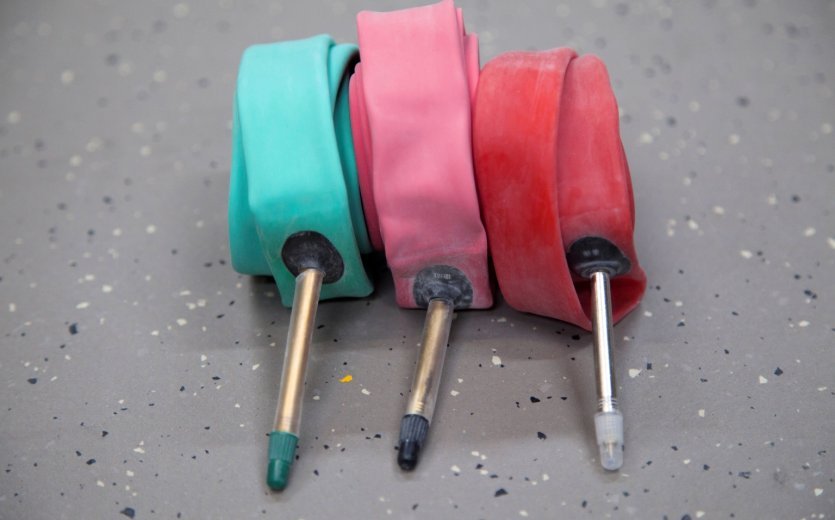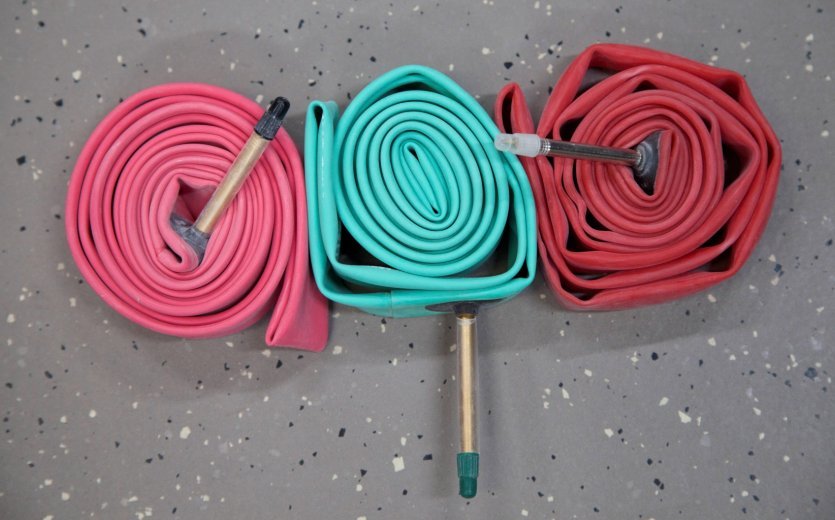Comparison: bicycle tube materials
In a world that seems to be going tubeless, tube technology is still advancing. Read on to learn more about the materials they are made of.
Bicycle tubes have been around since 1888, when John Boyd Dunlop made the first pneumatic tyres for his son’s tricycle. Today, a lot has changed and the various materials available have made riding with tubes a no brainer. While many have switched to tubeless setups, there are still advantages to tubes, especially since new materials have increased their durability and dropped their weight.
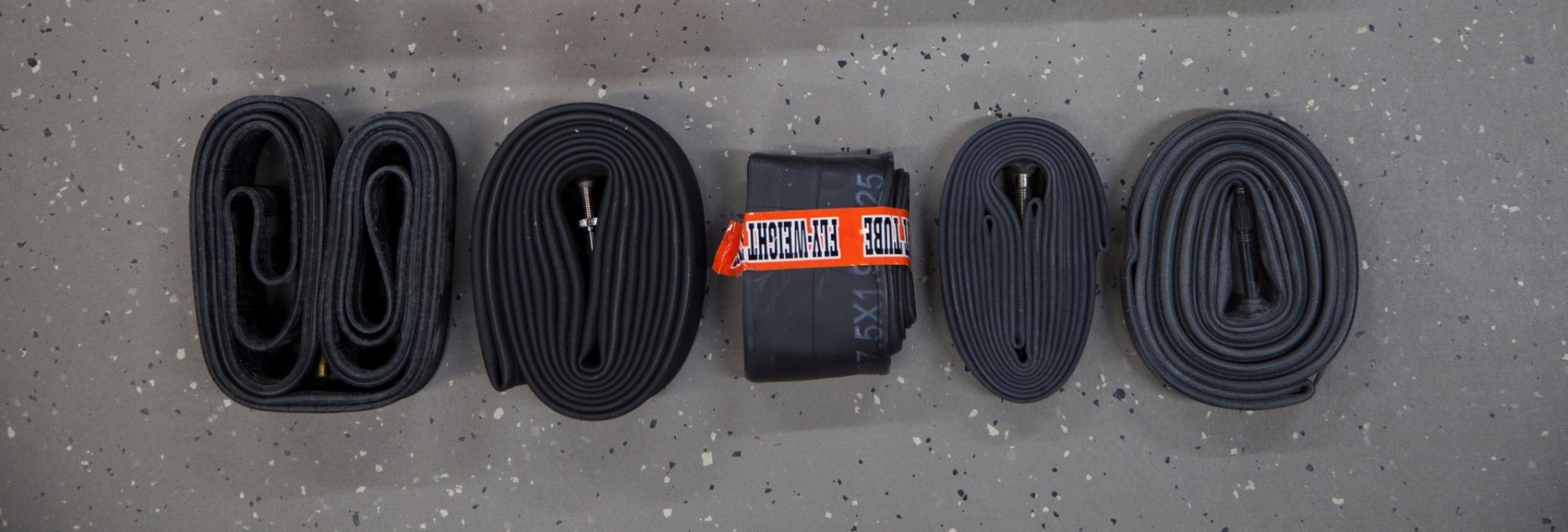
Butyl rubber tubes.
Butyl
Most tubes are made of butyl rubber. It is very elastic and holds air well. The weight of the tubes however, changes drastically depending on its application and tyre size. The tubes themselves have little effect on rolling resistance, but the more flexible it is, the better. The majority of tube manufactures use butyl rubber.
| Advantages | Disadvantages |
|---|---|
| Weight: When it comes to road bikes, butyl tubes aren’t much heavier than their latex or thermoplastic counterparts. | Weight: The majority of MTB butyl tubes are heavier than latex and thermoplastic. |
| Price: Butyl tubes are more cost less than latex or thermoplastic. | Puncture Protection: Butyl tubes are usually not as puncture resistance as their counterparts. |
| Pressure Loss: Butyl tubes lose air very slowly. |
Latex
Most latex tubes are lighter than butyl versions. They also offer a high level of puncture protection from snake bites and foreign bodies. This is due to the talcum powder on the outside of the latex tubes. The powder prevents the tube from sticking to the tyre, allowing it to deform when poked. When mounting latex tubes, I recommend adding a little more talcum powder to ensure they don’t stick longer. Their high level of flexibility lowers the rolling resistance as well. Latex tubes cannot come into contact with oil or grease and should be kept out of direct sunlight and away from higher temperatures. The biggest disadvantage to latex is quick air loss, which means that tube pressure needs to be checked before every ride.
| Advantages | Disadvantages |
|---|---|
| Rolling Resistance: Because latex is so flexible, they lower overall rolling resistance. | Pressure Loss: Latex losses air faster than both butyl and thermoplastic tubes. |
| Puncture Protection: Latex is more puncture resistant than butyl tubes. | Price: Latex tubes are more expensive than butyl. |
| Weight: Latex tubes are very lightweight. |
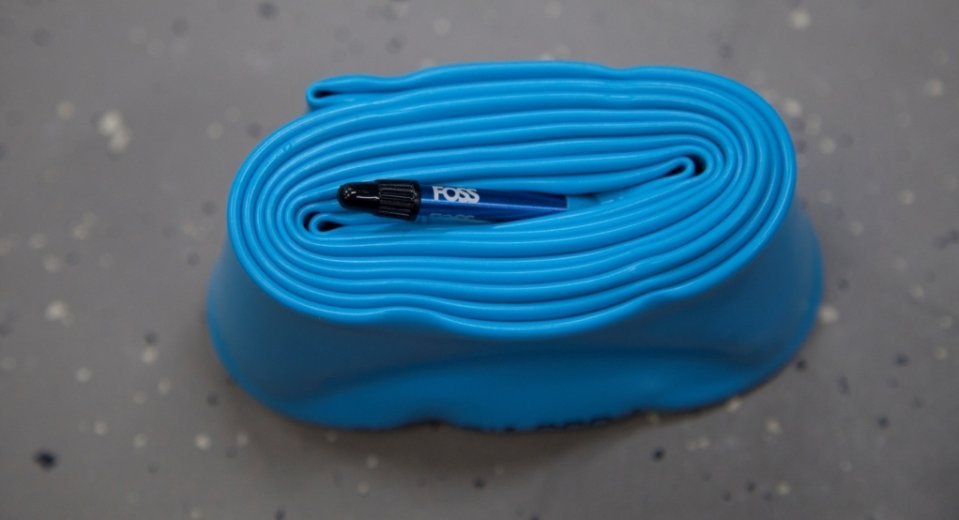
FOSS's thermoplastic tube.
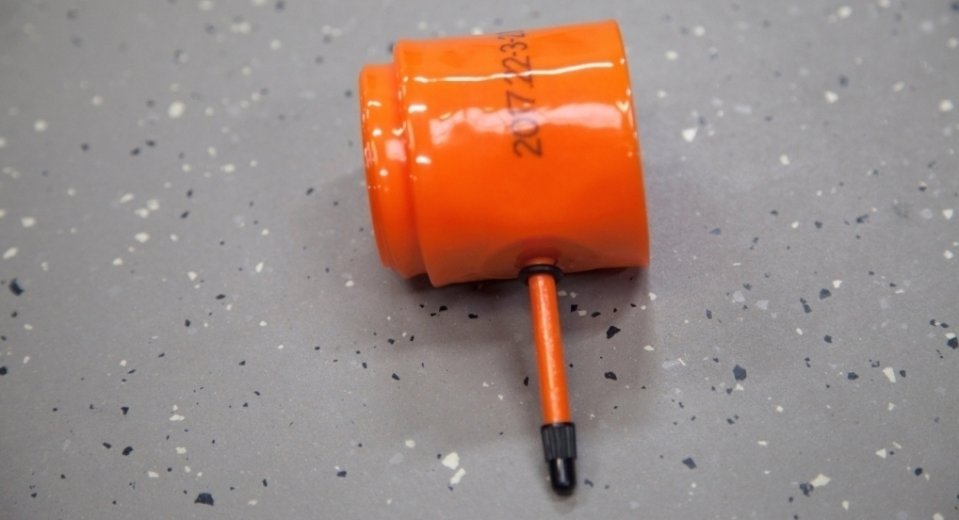
tubolito's thermoplastic tube.
Thermoplastic
The third, relatively unknown, material tubes are made of is thermoplastic. The biggest difference to latex and butyl tubes is that they are made from a composite material instead of rubber. Thermoplastic tubes are more elastic and durable than other tube materials and offer the best level of puncture protection. We offer these types of tubes from FOSS and tubolito. While tubolito makes their thermoplastic tubes with a seamless design, FOSS mixes thermoplastic with elastomer. Both are recyclable and extremely lightweight.
| Advantages | Disadvantages |
|---|---|
| Puncture Protection: Thermoplastic tubes offer the highest level of puncture protection, and can still be patched/repaired. | Price: Thermoplastic tubes are relatively expensive when compared to butyl versions. |
| Weight: Thermoplastic tubes are more lightweight. Especially the tubolito version which can save up to 65% over butyl tubes. | |
| Rolling Resistance: Due to their elasticity, thermoplastic tubes lower the rolling resistance. | |
| Pressure Loss: Thermoplastic tubes lose pressure very slowly. |
Is lightweight better?
The lighter a tube is, the less rotating mass there is around the wheels. This also allows the wheels to accelerate faster, but to make this noticeable the tube needs to be significantly lighter than before. However, when it comes to puncture protection, lightweight butyl tubes don’t usually perform well. This is not the case with thermoplastic and latex tubes though.
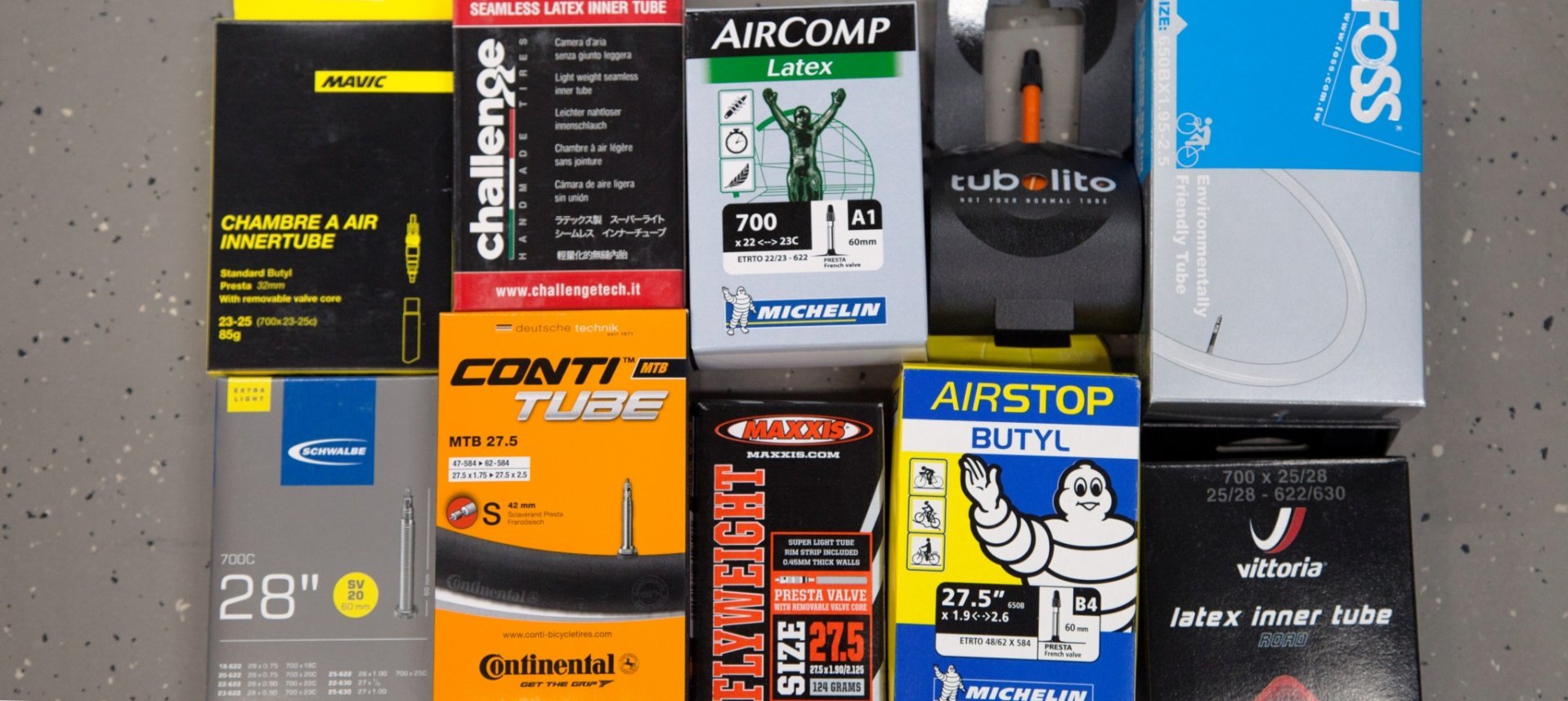
The various tube manufacturers.
Summary
The three different materials, butyl, latex and thermoplastic all have their advantages and disadvantages, but which one you choose to ride is up to you and your riding style. But since their inception in 1888, they have come quite a way and are still a great option in a world that seems to only want to go tubeless.

